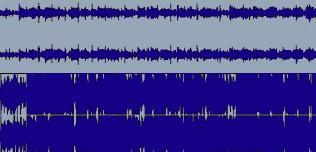
In order to produce a good master, a mix needs proper headroom and dynamic range.
WHAT IS HEADROOM?
Headroom is the distance between an audio tracks peak level (when the meter is at its highest) and 0 level on the output meter.
As a song plays, the output meter on the stereo/main out bounces up and down with the music. You can see how high (loud) an audio track peaks by looking at this meter. Anything peaking over 0 level usually means distortion, so at all costs stay below 0 level.
How far is your peak loudness below 0 level? That's the simple definition of what headroom is. So, if your meter is peaking -3dbs below 0 level, you have 3dbs of headroom. If your meter is peaking right at 0 level, you have NO headroom.
Note - +3dbs to +6dbs of headroom is the standard recommended amount, but many times a song with more or a little less headroom can still be mastered with no problems. Although it really makes no sense to give a mastering engineer a mix with 0dbs of headroom and risk the chance that it's slightly distorted. There's no reason to do it because overall song volume is done in the mastering process, not in mixing.
WHAT IS DYNAMIC RANGE?
As a song plays, the output meter constantly goes up and down.
Dynamic range is the area between the peak level (when the meter is up) and the low level (when the meter is down). Roughly, 3dbs to 6dbs of movement between the high and low meter level is a typical amount of dynamic range, but this does depend on the genre of music.
Note - One problem you want to watch out for (if you're mixing your own music) is dynamic range between song sections. You don't want a +10db or more difference between the verses and choruses. This creates a mastering problem because the verses will never be loud enough compared to the rest of the song. Roughly a 6db difference is as high as you want to go. Read more....


